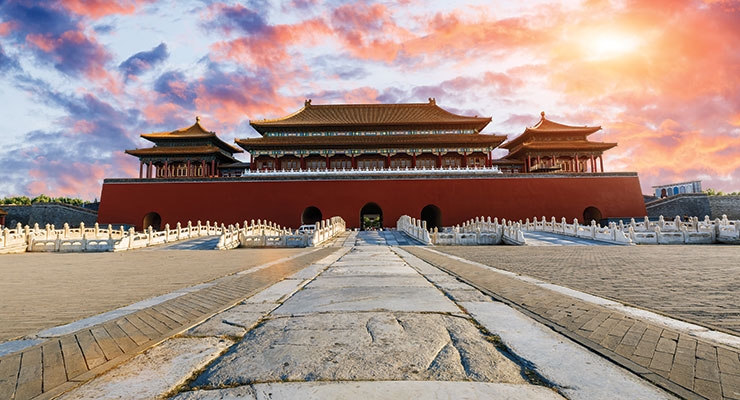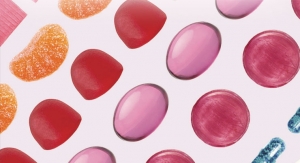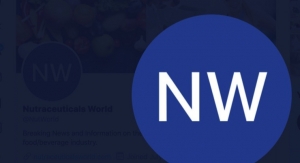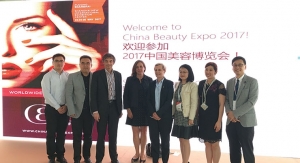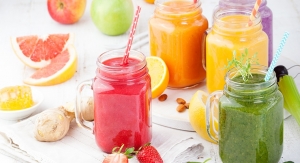By Ally Dai, Correspondent09.01.17
We’re still waiting… Hailed as the next big thing several years ago, beauty-from-within still hasn’t taken off in China. Back in 2011, led by Japanese cosmetic companies such as Fancyl, DHC, Kanebo, and Shiseido, collagen-based beauty drinks and powders became popular in China. These introductions were soon followed by Inneov of L’Oréal and Nestlé, as well as domestic players such as Marubi (one of whose largest shareholders is LVMH-backed private equity fund L Capital Asia) and Guizhou Bailing Group, a local pharmaceutical company.
Two years later, however, market demand was quickly dampened by several incidents. First, China’s state-owned media questioned product claims and high retail prices. Next, there were allegations of estrogen being added to formulas.
Companies insisted that oral collagen was safe and reliable, and delivered anti-aging and whitening benefits, but many experts, including dermatologists, argued to the contrary. As a result of the controversy, product sales stalled and the market has remained sluggish for the past four years. The fact that Inneov left China just 16 months after its debut underscores the category’s underperformance.
Never Fade Away
However, the concept “you are what you eat” remains deeply rooted in Chinese culture. Demands for holistic beauty actually never fade away just because of a few modern incidents. This yearning for “beauty-from-within” has been proven by an e-commerce report from TaoBao (China’s largest online retail platform) and CBNData in 2015. Women represent a major consumer group in China’s nutraceuticals market, where 60% of total sales come from women between 22 and 50 years of age, and the percentage of young females (aged between 18 and 28) have been steadily on the rise, according to the report.
According to TaoBao, the fastest growing nutraceutical products in 2015 were enzyme-based drinks and powders with major beauty claims including cleansing/detoxing, anti-acne, and weight loss. This finding is echoed by a Roland Berger report. Growing at an annual average rate of 8% during 2015-2020, China’s nutraceutical market is expected to exceed $26.8 billion by 2020. Beauty care will be in the greatest demand along with vitamin/mineral replenishment, and immunity boosting, according to the Roland Berger consumer survey.
Social media attests to the popularity of Japanese inner beauty products among Chinese consumers in recent years. These somewhat novel products, which include whitening pills, anti-glycation drinks, and “perfume candy” (i.e., edible deodorants)—all of them launched by big Japanese names like Shiseido, Pola and Fancl—have become Internet sensations, primarily due to the heavy promotion and education efforts by surging e-commerce channels, mainly WeChat and DaiGou (the latter means “purchasing on behalf of” in Mandarin; i.e., an overseas person purchases goods for a customer in mainland China). One of the most talked about items is Pola White Shot, which claims beauty benefits of anti-hyperpigmentation, whitening, minimizing pores with actives like L-cysteine and vitamins C, E, and B2.
A prosperous China is fueling domestic demand in nearly all beauty- and wellness-related sectors, including inner beauty products. The question here should not be “if,” but “when;” especially after recent regulatory adjustments toward more open administration of nutraceuticals.
New Regulations
Based on the current China regulatory system, nutraceuticals fall into two different categories: conventional food and functional food (including both health food/beverage and nutritional supplements). While neither is allowed to make any claim on therapeutic effect or replacing medical treatment, the two are subject to very distinctive regulatory controls.
Specifically, conventional foods can make statements about the presence or amount of nutrients (content claims) or the functions of nutrients on normal physiology (general function claims). However, they cannot contain any ingredient listed in the Functional Food Raw Materials Directory, or make any health claims. Functional foods are defined as food/beverage/supplement products that have specific health functions or replenish nutrients, and are required to make clear statements on the specific groups of people they are suitable and unsuitable for, as well as the exact amount to be consumed.
It is also worth noting that when it comes to health claims for functional foods, only the subcategory of health food/beverage is allowed to make ones specified in the Functional Food Health Claims Directory, and nutritional supplements can only claim nutrients, mainly vitamins and minerals. A Blue Hat symbol is labeled on any approved functional food to help distinguish it from other non-approved ones and conventional food, giving consumers safety and efficacy assurance.
Got all that? Regulators have intended to clarify issues with the Administrative Measures on the Registration and Recordation of Functional Foods, which came into force July 2016, the Functional Food Raw Material Directory (Part I) and the Functional Food Health Claims Directory (Part I) issued in January 2017, and the Proposal for Reinforcing Supervision of Functional Foods (Draft for Public Comment) posted in April by CFDA (China State Food and Drug Administration).
All of these measures reflect CFDA’s new way of thinking. While there are still two types of policies (registration and recordation filing) for functional food produced or marketed in China, registration will largely replace recordation filing, which as a result relaxes market entry but tightens up raw material management and post-launch supervision. In order to facilitate the changes, CFDA is also expected to expand the Raw Materials and Excipients Directory for Functional Food. Along with those materials listed in Medicinal and Edible Product Directory and New Food Resource Directory, there should be much room to play for nutraceutical manufacturers in China.
Ingredients in Activity
Players in China’s inner beauty market need to pay particular attention to claims as well as ingredients before marketing any product to consumers. There is no such generic claim as “beautifying” or “skin care” allowed by legislation for either conventional or functional foods, however, some specific claims and/or ingredients could be used to help products convey beauty-related messages, and avoid food safety litigation.
For health food/beverages, among the 27 health claims specified by the Functional Food Health Claims Directory, quite a few can do the job, ranging from anti-acne and anti-chloasma to improve skin hydration, balance skin oil and antioxidation. Others could also be translated into similar benefits in a more holistic way, like: improve immune function; assist protecting from harmful radiation; improve nutritional anemia; weight loss; regulate intestinal microbiota; improve sleep quality; and alleviate fatigue.
In contrast, conventional food and beauty supplements are only allowed to state nutrient content instead of physiological effect. Therefore, companies can manage to use materials listed in the New Food Resource Directory and Medicinal and Edible Product Directory to imply beauty benefits of their products. The latter actually reflects an ancient Traditional Chinese Medicine (TCM) theory, called medicine-food homology, meaning certain Chinese medicinal materials can be used as foods due to their same origins. Expected to be issued soon, the directory is largely in line with the government attempt to promote TCM both nationally and internationally.
Among 116 exempt TCM materials listed in the Medicinal and Edible Product Directory, quite a few are already in widespread applications in inner beauty products, such as jujube red date (Chinese date) and Job’s Tears (Coix lacryma-jobi). Donkey-hide gelatin (gelatin obtained from donkey skin), known as EJiao in TCM, is particularly successful here. EJiao-based products improve anemia and have antioxidant properties, which Chinese consumers interpret as improving skin complexion.
Another approach to ensure the legality of claims and ingredients is to use the materials as “new food resources” (i.e., animals, plants, microorganisms, and their derivatives), which are not “traditional eating habits in China.” Ingredients in the New Food Resource Directory such as hyaluronic acid, ceramides and phytosterols, as well as collagen and peptides, are already mainstay ingredients in inner beauty products.
The recent emergence of prebiotics/probiotics and enzymes/fermentation, is particularly noticeable in China. These products, primarily beverages and powders containing or fermented with specific probiotic strains, and/or formulated with prebiotics like fructo-oligosaccharide (FOS), Mannose-oligosaccharides (MOS), and inulin, are gaining popularity among consumers who interpret immune system-boosting and digestive system improvement as part of holistic beauty care.
All in all, with growing consumer preference for natural/green in all beauty sectors, ingredients with green attributes along with credible scientific verification are increasingly used as a major selling point by companies in China’s inner beauty market. Apart from those listed by all related directories, the applications of vegetables and fruits, especially superfruits including various berries and seeds rich in antioxidants and unsaturated fatty acids, can also be found in numerous beauty-positioned food products in China.
Marketers in Action
China’s inner beauty market remains fragmented. Falling short of dominant brands, the players are primarily from the functional food and pharmaceutical industries. But with predictions of a rise in sales, more traditional cosmetic manufacturers are entering the scene, the vast majority of them adopting the strategy of teaming up with food or pharmaceutical companies to pull resources together to launch successful beauty from within products.
One example is Jala, a large domestic cosmetic company. In May, Jala partnered with Maruzen, a Japanese pharmaceutical company, to launch two beauty from within flower beverages. Marketed under its premium-positioned cosmetic brand Maysu, the products contain patented ingredients including lotus seed powder whose skin whitening/brightening effect has been well-recognized by Chinese consumers. At a recent party to celebrate Jala’s 15th anniversary, CEO Zheng Chunyin told attendees that inner beauty will become a core business, along with color cosmetics and personal care, during the next 25 years.
GN Pearl Group which, as its name implies, specializes in pearls, ancient TCM ingredients best known to whiten skin and improve complexion, expanded into OTC channels by launching its pearl-based functional foods in several drug chain stores earlier this year.
A relative newcomer, Urte Group is teaming up with New Zealand-based GMP to launch eight inner beauty product lines under Geoskincare, its existing cosmetic brand. Specifically targeting younger consumers, the new lines are said to meet all beauty care needs ranging from whitening, anti-aging, moisturizing, soothing, to detoxing and weight loss. Meanwhile, the group has also signed a deal with an Australian company Swisse (acquired by a Chinese nutrition and baby care products provider Biostime in 2015), to help distribute just launched Swisse beauty supplements including Swisse Hair Skin Nails in Chinese brick-and-mortar stores.
Compared to their local counterparts, international cosmetic brands are more cautious, testing the waters with their imported products. For example, AmorePacific launched a collagen drink in China back in 2014, but the promotion under its Laneige brand has been quite limited and the focus shifted from collagen to fruit extract ingredients. Shiseido seemed to up the ante by teaming with restaurant chain Wagas to launch Ultimune Juice in 2015. Made of beetroot, pear, and kale, the drink reportedly boosts immunity. The juice launch coincided with the rollout of Ultimune Power Infusing Caring topical serum.
Fancl has marketed its beauty from within products in the conventional food category for years. In May, Fancl entered the functional food category by signing an exclusive agreement with China Sinopharm International Corporation, one of China’s biggest pharmaceutical companies. Under this new agreement, the latter will help the former obtain official approval for health food/nutritional supplements and expand new distribution channels in mainland China.
Brands aside, ODM/OEM manufacturers in China are also entering the category. At two recent nutraceutical shows in Shanghai, NHNC 2017 and Healthplex & Nutraceutical China 2017, there were several ODM/OEM manufacturers promoting their inner beauty product businesses. Two of the most notable were Korea-based Cosmax Bio and Kolmar BNH, both of which are well-known to Chinese cosmetic brands.
A Look to the Future
Beauty from within in China still has plenty of potential. Yes, regulations are increasingly complex but they’re clearer than ever, too. More knowledgeable and segmented consumers have created more opportunities and work for manufacturers. As more consumers take a proactive and holistic approach toward their health and beauty regimens, demand for such products will only grow.
Experts say the most successful products will be those that make substantiated health claims positioned toward mass market consumers, especially younger shoppers.
Two years later, however, market demand was quickly dampened by several incidents. First, China’s state-owned media questioned product claims and high retail prices. Next, there were allegations of estrogen being added to formulas.
Companies insisted that oral collagen was safe and reliable, and delivered anti-aging and whitening benefits, but many experts, including dermatologists, argued to the contrary. As a result of the controversy, product sales stalled and the market has remained sluggish for the past four years. The fact that Inneov left China just 16 months after its debut underscores the category’s underperformance.
Never Fade Away
However, the concept “you are what you eat” remains deeply rooted in Chinese culture. Demands for holistic beauty actually never fade away just because of a few modern incidents. This yearning for “beauty-from-within” has been proven by an e-commerce report from TaoBao (China’s largest online retail platform) and CBNData in 2015. Women represent a major consumer group in China’s nutraceuticals market, where 60% of total sales come from women between 22 and 50 years of age, and the percentage of young females (aged between 18 and 28) have been steadily on the rise, according to the report.
According to TaoBao, the fastest growing nutraceutical products in 2015 were enzyme-based drinks and powders with major beauty claims including cleansing/detoxing, anti-acne, and weight loss. This finding is echoed by a Roland Berger report. Growing at an annual average rate of 8% during 2015-2020, China’s nutraceutical market is expected to exceed $26.8 billion by 2020. Beauty care will be in the greatest demand along with vitamin/mineral replenishment, and immunity boosting, according to the Roland Berger consumer survey.
Social media attests to the popularity of Japanese inner beauty products among Chinese consumers in recent years. These somewhat novel products, which include whitening pills, anti-glycation drinks, and “perfume candy” (i.e., edible deodorants)—all of them launched by big Japanese names like Shiseido, Pola and Fancl—have become Internet sensations, primarily due to the heavy promotion and education efforts by surging e-commerce channels, mainly WeChat and DaiGou (the latter means “purchasing on behalf of” in Mandarin; i.e., an overseas person purchases goods for a customer in mainland China). One of the most talked about items is Pola White Shot, which claims beauty benefits of anti-hyperpigmentation, whitening, minimizing pores with actives like L-cysteine and vitamins C, E, and B2.
A prosperous China is fueling domestic demand in nearly all beauty- and wellness-related sectors, including inner beauty products. The question here should not be “if,” but “when;” especially after recent regulatory adjustments toward more open administration of nutraceuticals.
New Regulations
Based on the current China regulatory system, nutraceuticals fall into two different categories: conventional food and functional food (including both health food/beverage and nutritional supplements). While neither is allowed to make any claim on therapeutic effect or replacing medical treatment, the two are subject to very distinctive regulatory controls.
Specifically, conventional foods can make statements about the presence or amount of nutrients (content claims) or the functions of nutrients on normal physiology (general function claims). However, they cannot contain any ingredient listed in the Functional Food Raw Materials Directory, or make any health claims. Functional foods are defined as food/beverage/supplement products that have specific health functions or replenish nutrients, and are required to make clear statements on the specific groups of people they are suitable and unsuitable for, as well as the exact amount to be consumed.
It is also worth noting that when it comes to health claims for functional foods, only the subcategory of health food/beverage is allowed to make ones specified in the Functional Food Health Claims Directory, and nutritional supplements can only claim nutrients, mainly vitamins and minerals. A Blue Hat symbol is labeled on any approved functional food to help distinguish it from other non-approved ones and conventional food, giving consumers safety and efficacy assurance.
Got all that? Regulators have intended to clarify issues with the Administrative Measures on the Registration and Recordation of Functional Foods, which came into force July 2016, the Functional Food Raw Material Directory (Part I) and the Functional Food Health Claims Directory (Part I) issued in January 2017, and the Proposal for Reinforcing Supervision of Functional Foods (Draft for Public Comment) posted in April by CFDA (China State Food and Drug Administration).
All of these measures reflect CFDA’s new way of thinking. While there are still two types of policies (registration and recordation filing) for functional food produced or marketed in China, registration will largely replace recordation filing, which as a result relaxes market entry but tightens up raw material management and post-launch supervision. In order to facilitate the changes, CFDA is also expected to expand the Raw Materials and Excipients Directory for Functional Food. Along with those materials listed in Medicinal and Edible Product Directory and New Food Resource Directory, there should be much room to play for nutraceutical manufacturers in China.
Ingredients in Activity
Players in China’s inner beauty market need to pay particular attention to claims as well as ingredients before marketing any product to consumers. There is no such generic claim as “beautifying” or “skin care” allowed by legislation for either conventional or functional foods, however, some specific claims and/or ingredients could be used to help products convey beauty-related messages, and avoid food safety litigation.
For health food/beverages, among the 27 health claims specified by the Functional Food Health Claims Directory, quite a few can do the job, ranging from anti-acne and anti-chloasma to improve skin hydration, balance skin oil and antioxidation. Others could also be translated into similar benefits in a more holistic way, like: improve immune function; assist protecting from harmful radiation; improve nutritional anemia; weight loss; regulate intestinal microbiota; improve sleep quality; and alleviate fatigue.
In contrast, conventional food and beauty supplements are only allowed to state nutrient content instead of physiological effect. Therefore, companies can manage to use materials listed in the New Food Resource Directory and Medicinal and Edible Product Directory to imply beauty benefits of their products. The latter actually reflects an ancient Traditional Chinese Medicine (TCM) theory, called medicine-food homology, meaning certain Chinese medicinal materials can be used as foods due to their same origins. Expected to be issued soon, the directory is largely in line with the government attempt to promote TCM both nationally and internationally.
Among 116 exempt TCM materials listed in the Medicinal and Edible Product Directory, quite a few are already in widespread applications in inner beauty products, such as jujube red date (Chinese date) and Job’s Tears (Coix lacryma-jobi). Donkey-hide gelatin (gelatin obtained from donkey skin), known as EJiao in TCM, is particularly successful here. EJiao-based products improve anemia and have antioxidant properties, which Chinese consumers interpret as improving skin complexion.
Another approach to ensure the legality of claims and ingredients is to use the materials as “new food resources” (i.e., animals, plants, microorganisms, and their derivatives), which are not “traditional eating habits in China.” Ingredients in the New Food Resource Directory such as hyaluronic acid, ceramides and phytosterols, as well as collagen and peptides, are already mainstay ingredients in inner beauty products.
The recent emergence of prebiotics/probiotics and enzymes/fermentation, is particularly noticeable in China. These products, primarily beverages and powders containing or fermented with specific probiotic strains, and/or formulated with prebiotics like fructo-oligosaccharide (FOS), Mannose-oligosaccharides (MOS), and inulin, are gaining popularity among consumers who interpret immune system-boosting and digestive system improvement as part of holistic beauty care.
All in all, with growing consumer preference for natural/green in all beauty sectors, ingredients with green attributes along with credible scientific verification are increasingly used as a major selling point by companies in China’s inner beauty market. Apart from those listed by all related directories, the applications of vegetables and fruits, especially superfruits including various berries and seeds rich in antioxidants and unsaturated fatty acids, can also be found in numerous beauty-positioned food products in China.
Marketers in Action
China’s inner beauty market remains fragmented. Falling short of dominant brands, the players are primarily from the functional food and pharmaceutical industries. But with predictions of a rise in sales, more traditional cosmetic manufacturers are entering the scene, the vast majority of them adopting the strategy of teaming up with food or pharmaceutical companies to pull resources together to launch successful beauty from within products.
One example is Jala, a large domestic cosmetic company. In May, Jala partnered with Maruzen, a Japanese pharmaceutical company, to launch two beauty from within flower beverages. Marketed under its premium-positioned cosmetic brand Maysu, the products contain patented ingredients including lotus seed powder whose skin whitening/brightening effect has been well-recognized by Chinese consumers. At a recent party to celebrate Jala’s 15th anniversary, CEO Zheng Chunyin told attendees that inner beauty will become a core business, along with color cosmetics and personal care, during the next 25 years.
GN Pearl Group which, as its name implies, specializes in pearls, ancient TCM ingredients best known to whiten skin and improve complexion, expanded into OTC channels by launching its pearl-based functional foods in several drug chain stores earlier this year.
A relative newcomer, Urte Group is teaming up with New Zealand-based GMP to launch eight inner beauty product lines under Geoskincare, its existing cosmetic brand. Specifically targeting younger consumers, the new lines are said to meet all beauty care needs ranging from whitening, anti-aging, moisturizing, soothing, to detoxing and weight loss. Meanwhile, the group has also signed a deal with an Australian company Swisse (acquired by a Chinese nutrition and baby care products provider Biostime in 2015), to help distribute just launched Swisse beauty supplements including Swisse Hair Skin Nails in Chinese brick-and-mortar stores.
Compared to their local counterparts, international cosmetic brands are more cautious, testing the waters with their imported products. For example, AmorePacific launched a collagen drink in China back in 2014, but the promotion under its Laneige brand has been quite limited and the focus shifted from collagen to fruit extract ingredients. Shiseido seemed to up the ante by teaming with restaurant chain Wagas to launch Ultimune Juice in 2015. Made of beetroot, pear, and kale, the drink reportedly boosts immunity. The juice launch coincided with the rollout of Ultimune Power Infusing Caring topical serum.
Fancl has marketed its beauty from within products in the conventional food category for years. In May, Fancl entered the functional food category by signing an exclusive agreement with China Sinopharm International Corporation, one of China’s biggest pharmaceutical companies. Under this new agreement, the latter will help the former obtain official approval for health food/nutritional supplements and expand new distribution channels in mainland China.
Brands aside, ODM/OEM manufacturers in China are also entering the category. At two recent nutraceutical shows in Shanghai, NHNC 2017 and Healthplex & Nutraceutical China 2017, there were several ODM/OEM manufacturers promoting their inner beauty product businesses. Two of the most notable were Korea-based Cosmax Bio and Kolmar BNH, both of which are well-known to Chinese cosmetic brands.
A Look to the Future
Beauty from within in China still has plenty of potential. Yes, regulations are increasingly complex but they’re clearer than ever, too. More knowledgeable and segmented consumers have created more opportunities and work for manufacturers. As more consumers take a proactive and holistic approach toward their health and beauty regimens, demand for such products will only grow.
Experts say the most successful products will be those that make substantiated health claims positioned toward mass market consumers, especially younger shoppers.

